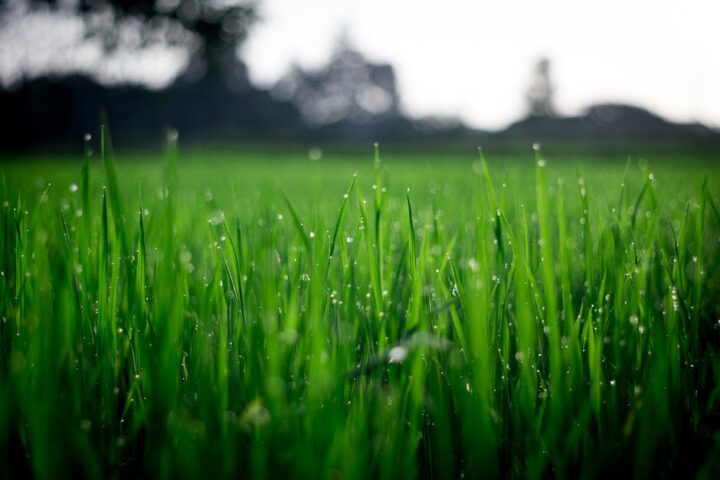Unveiling the Importance of Turf Management in Real Estate
Turf management plays a crucial role in the aesthetic appeal and overall value of real estate properties. It is an art that seamlessly merges science, technology, and environmental stewardship to create lush, healthy green spaces that not only enhance a property’s visual appeal but also its market value.
This article explores the importance of turf management in real estate, shedding light on its various aspects, from soil fertility and pest control to water management and landscaping design.

Understanding Soil Fertility in Turf Management
Soil fertility is the backbone of any successful turf management strategy. It pertains to the soil’s ability to sustain plant growth by providing essential nutrients. A fertile soil enhances the health and vibrancy of the turf, adding to its aesthetic appeal and reducing the need for frequent replacements or repairs. However, soil fertility is not a static attribute. It requires regular testing and supplementation to ensure it remains conducive to turf growth.
Incorporating organic matter, applying appropriate fertilizers, and maintaining optimal pH levels are some of the methods employed in preserving soil fertility. Moreover, proper aeration and irrigation practices can also contribute to soil health and promote healthy turf growth. Make sure you protect your lawn by implementing proper soil management techniques. Plus, healthy soil can also help reduce the need for chemical fertilizers and pesticides, making your lawn more eco-friendly.
The Role of Pest Control
Pest control is an integral part of turf management. Pests, be it insects, weeds, or diseases, can wreak havoc on a lush green lawn, impacting its visual appeal and reducing its lifespan. Effective pest control strategies can help keep these issues at bay, ensuring the longevity and health of the turf.
Pest control should be done responsibly, keeping environmental implications in mind. The use of organic pest control methods, coupled with regular monitoring and preventive measures, can help balance the need for pest control and environmental sustainability.
Additionally, proper turf management practices such as regular mowing, aeration, and fertilization can also aid in preventing pest infestations. Well-maintained turf is less susceptible to pest outbreaks and can recover faster from any damage caused by them.
Water Management: A Key Aspect
Water management is another crucial factor in turf management. Overwatering or underwater watering can both lead to turf decline. Implementing an efficient irrigation system helps ensure the turf receives the right amount of water, promoting healthy growth and reducing water waste. Additionally, water management should consider the drainage capacity of the soil. Proper drainage prevents waterlogging and related turf issues, contributing to the creation of a healthy and resilient lawn.
Landscaping Design and Turf Management
The role of turf management extends to landscaping design as well. A well-designed landscape that incorporates turf strategically can enhance a property’s aesthetic appeal significantly. Turf management ensures that the grass areas of the landscape remain lush and healthy, thereby maintaining the overall visual appeal.
Turf management can help mitigate landscaping issues such as soil erosion. By ensuring the turf is healthy and properly maintained, it can effectively hold the soil in place, contributing to the longevity and stability of the landscape design.
Additionally, proper turf management can also help create a functional and safe outdoor space. By keeping the turf healthy and free from pests and diseases, it provides an inviting area for recreational activities, enhancing the overall value of the property. Keep in mind that proper turf management also involves regular mowing, edging, and trimming to maintain a well-manicured look.
Turf Management and Environmental Stewardship
Turf management and environmental stewardship go hand in hand. By implementing sustainable practices, turf managers can minimize their impact on the environment, promoting biodiversity and conserving resources.
This can include practices such as using organic fertilizers, conserving water, and employing integrated pest management strategies. Healthy turf contributes to environmental well-being by acting as a natural filter, capturing dust and pollutants, and improving air quality.
Thus, effective turf management not only enhances property value but also contributes to a healthier environment. With proper care and maintenance, turf can continue to provide numerous benefits for both property owners and the environment.
In the realm of real estate, turf management holds a prominent position, considerably influencing a property’s visual appeal, market value, and environmental impact. It is a multifaceted practice that touches upon soil fertility, pest control, water management, landscaping design, and environmental stewardship. Not only does effective turf management deliver aesthetically pleasing and healthy green spaces, but it also plays a crucial role in creating eco-friendly landscapes.
By adopting best practices in turf management, property owners can enjoy a lush lawn that not only enhances their property value but also contributes to a healthier and more sustainable environment. Hence, turf management is not just an art; it’s a science and an environmental responsibility that merits due attention and investment.


